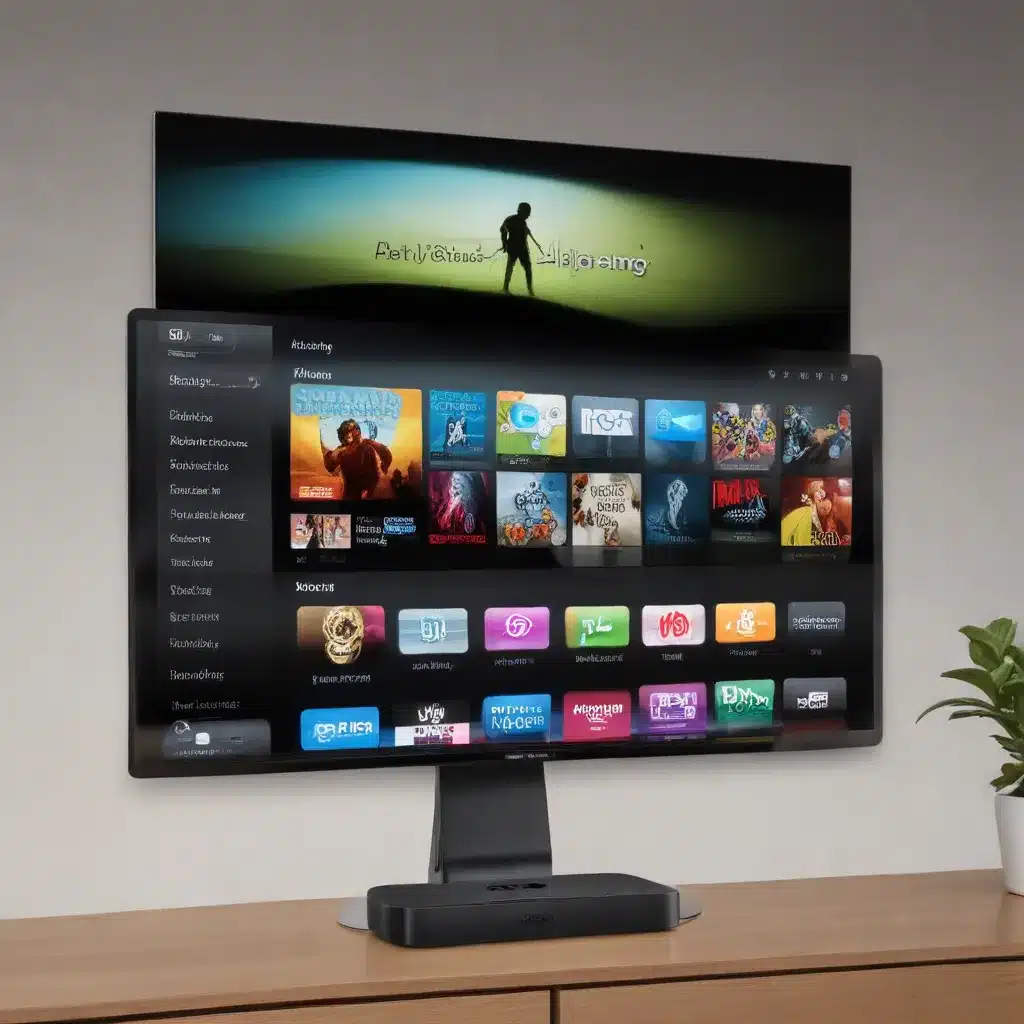
As a seasoned IT professional, I’ve encountered my fair share of challenges when it comes to the reliable performance of Apple’s AirPlay and screen mirroring features. These powerful tools allow us to seamlessly share content from our iOS devices, iPads, and Macs to our Apple TVs and compatible smart TVs, but they’re not without their quirks. In this in-depth article, I’ll provide practical troubleshooting tips and insights to help you get your AirPlay and screen mirroring functioning smoothly again.
Ensuring Compatibility and Network Connectivity
The first step in troubleshooting AirPlay and screen mirroring issues is to ensure that all of your devices are compatible and properly connected to the same Wi-Fi network. Apple maintains a list of AirPlay-compatible devices on their support site, so be sure to check that your hardware is on the list.
Once you’ve confirmed compatibility, verify that your iOS device, Mac, and Apple TV (or other AirPlay-enabled smart TV) are all connected to the same Wi-Fi network. Inconsistent network connections are a common culprit behind AirPlay and screen mirroring problems. If the devices are not on the same network, you’ll need to connect them accordingly.
Updating Software and Checking Settings
Keeping your devices updated with the latest software is crucial for optimal AirPlay and screen mirroring performance. Apple regularly releases updates that address bug fixes and improve the reliability of these features, so make sure to install the latest versions of iOS, iPadOS, macOS, and tvOS on your devices.
In addition to software updates, you’ll want to check your device settings to ensure that AirPlay and screen mirroring are properly enabled. On your iOS device or Mac, navigate to the appropriate settings menu (e.g., Settings > General > AirPlay & Handoff) and confirm that AirPlay is turned on and configured to allow access from the appropriate devices.
Troubleshooting Connection Issues
If you’re still experiencing issues with AirPlay or screen mirroring, it’s time to dig a little deeper. One common problem is the “AirPlay not showing up” scenario, where the AirPlay icon fails to appear on your iOS device or Mac when attempting to connect to your Apple TV or smart TV.
In many cases, this can be attributed to a problem with the activation of your Apple TV. As reported by some users in the Apple Support Community, a “Failed Activation” message at the bottom of the Apple TV’s “About” section may be the culprit. To resolve this, you’ll need to either use the Apple Configurator 2 tool on a Mac or the 3uTools software on a Windows PC to reactivate your Apple TV.
If the AirPlay icon is visible but the connection fails to establish, check your network’s firewall settings. Ensure that any firewalls or content restrictions on your Mac or iOS device are not blocking the necessary AirPlay communication. Temporarily disabling the firewall may help you determine if this is the root cause of the issue.
Optimizing Your Wi-Fi Network
Poor Wi-Fi performance can also be a significant factor in AirPlay and screen mirroring difficulties. Weak signal strength, interference from other wireless devices, or bandwidth limitations can all contribute to choppy, laggy, or failed connections.
To troubleshoot your network, consider using a tool like NetSpot or WiFi Explorer. These apps can help you analyze your wireless network, identify problem areas, and optimize your setup for better performance. By identifying and addressing any Wi-Fi coverage or interference issues, you may be able to resolve your AirPlay and screen mirroring woes.
Exploring Alternatives and Workarounds
If you’ve exhausted all the troubleshooting steps and are still unable to get AirPlay or screen mirroring working, there are a few alternative solutions worth considering:
-
JustStream: This macOS app provides a reliable way to mirror your Mac’s screen to an Apple TV or other AirPlay-compatible devices, bypassing any issues with the built-in AirPlay functionality.
-
Transloader: For those times when you can’t be on the same Wi-Fi network as your Mac, Transloader allows you to remotely download content to your computer from your iOS or iPadOS devices.
-
Boom 3D: If you’re experiencing audio issues when AirPlaying to your Mac, the Boom 3D audio enhancement software can help boost the quality and volume of your audio, providing a more immersive experience.
By exploring these alternatives, you can often find workarounds that enable you to enjoy the benefits of screen sharing and wireless streaming, even when the native AirPlay and screen mirroring features are not cooperating.
Seeking Professional Assistance
If you’ve followed all the troubleshooting steps outlined in this article and are still unable to resolve your AirPlay or screen mirroring issues, it may be time to seek professional assistance. The team at IT Fix is here to help, with experienced technicians who can dive deeper into the specifics of your setup and provide tailored solutions.
Don’t let frustrating technology problems dampen your productivity or entertainment experiences. By understanding the common causes of AirPlay and screen mirroring issues and applying the right troubleshooting techniques, you can get your Apple devices working in harmony once again. Remember, the IT Fix team is just a click away if you need further guidance or support.
Conclusion
AirPlay and screen mirroring are powerful features that allow us to seamlessly share content and enhance our digital experiences. However, as with any technology, they can occasionally encounter hiccups that require a bit of troubleshooting. By following the tips and insights outlined in this article, you’ll be well on your way to resolving common AirPlay and screen mirroring issues and enjoying a more seamless, connected Apple ecosystem.
If you have any further questions or need additional assistance, don’t hesitate to reach out to the IT Fix team. We’re here to help you navigate the ever-evolving world of technology and ensure your devices are working at their best.












